KD House
Location
Beijing, China
Programme
Private Residence
Client
Confidential
Work Scope
Interior Design: Concept, SD, DD, CD, CA
Current Status
Substantial Completion
The KD House sits in a typical villa neighborhood in Beijing’s northern suburbs, in a prevailing French architectural style. Despite conforming to plot ratios and residential codes, it grapples with typical commercial residence hurdles: excessive depth and limited daylight due to min. building spacing regulations.
To tackle this, we divided the space into two zones. One benefits from ample daylight and houses frequently used areas like the study, dining room, and master bedroom. The other maximizes internal natural light, creating a pleasant atmosphere and blurring indoor-outdoor boundaries for enhanced family space usage.
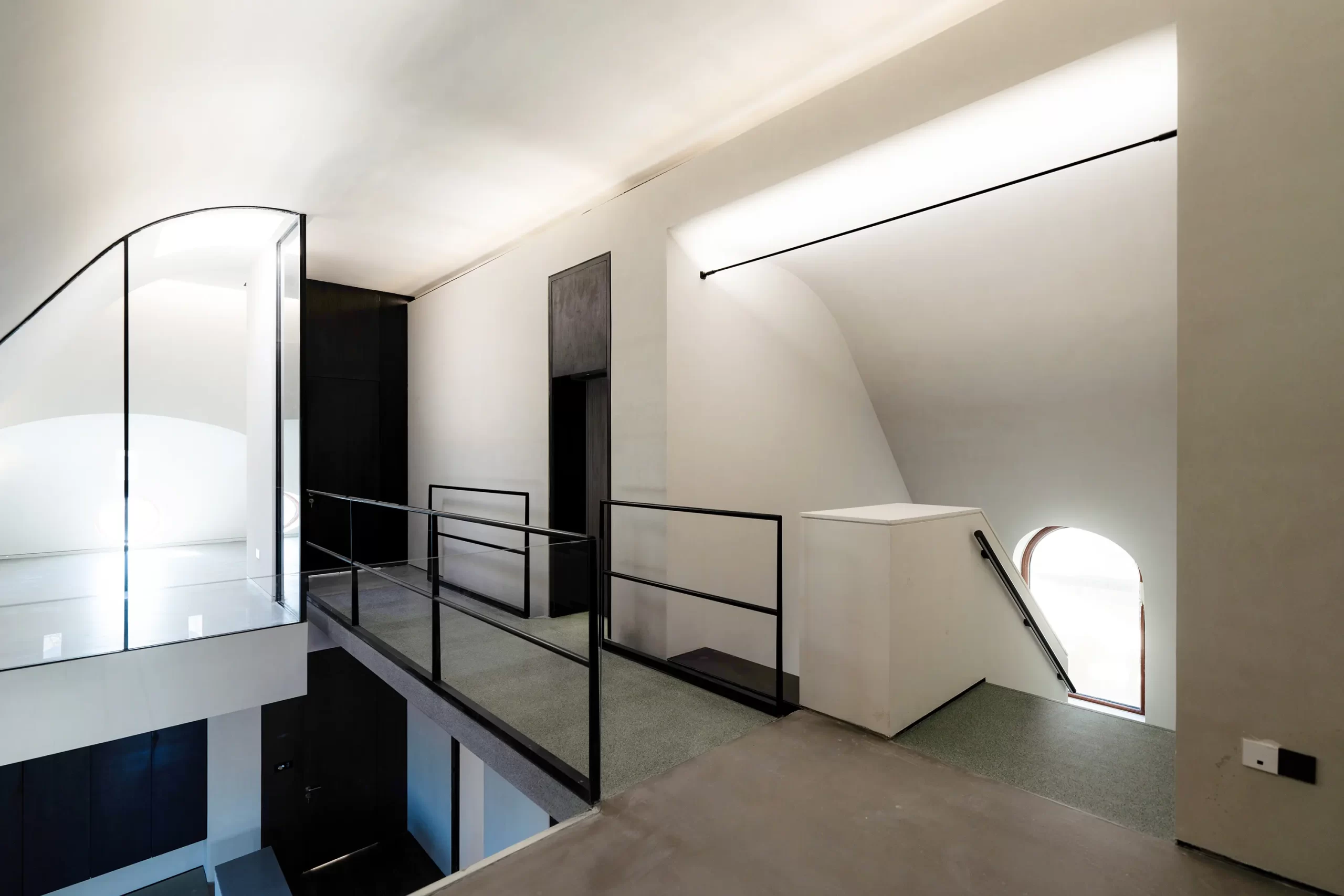
The KD House sits in a typical villa neighborhood in Beijing’s northern suburbs, in a prevailing French architectural style. Despite conforming to plot ratios and residential codes, it grapples with typical commercial residence hurdles: excessive depth and limited daylight due to min. building spacing regulations.
To tackle this, we divided the space into two zones. One benefits from ample daylight and houses frequently used areas like the study, dining room, and master bedroom. The other maximizes internal natural light, creating a pleasant atmosphere and blurring indoor-outdoor boundaries for enhanced family space usage.

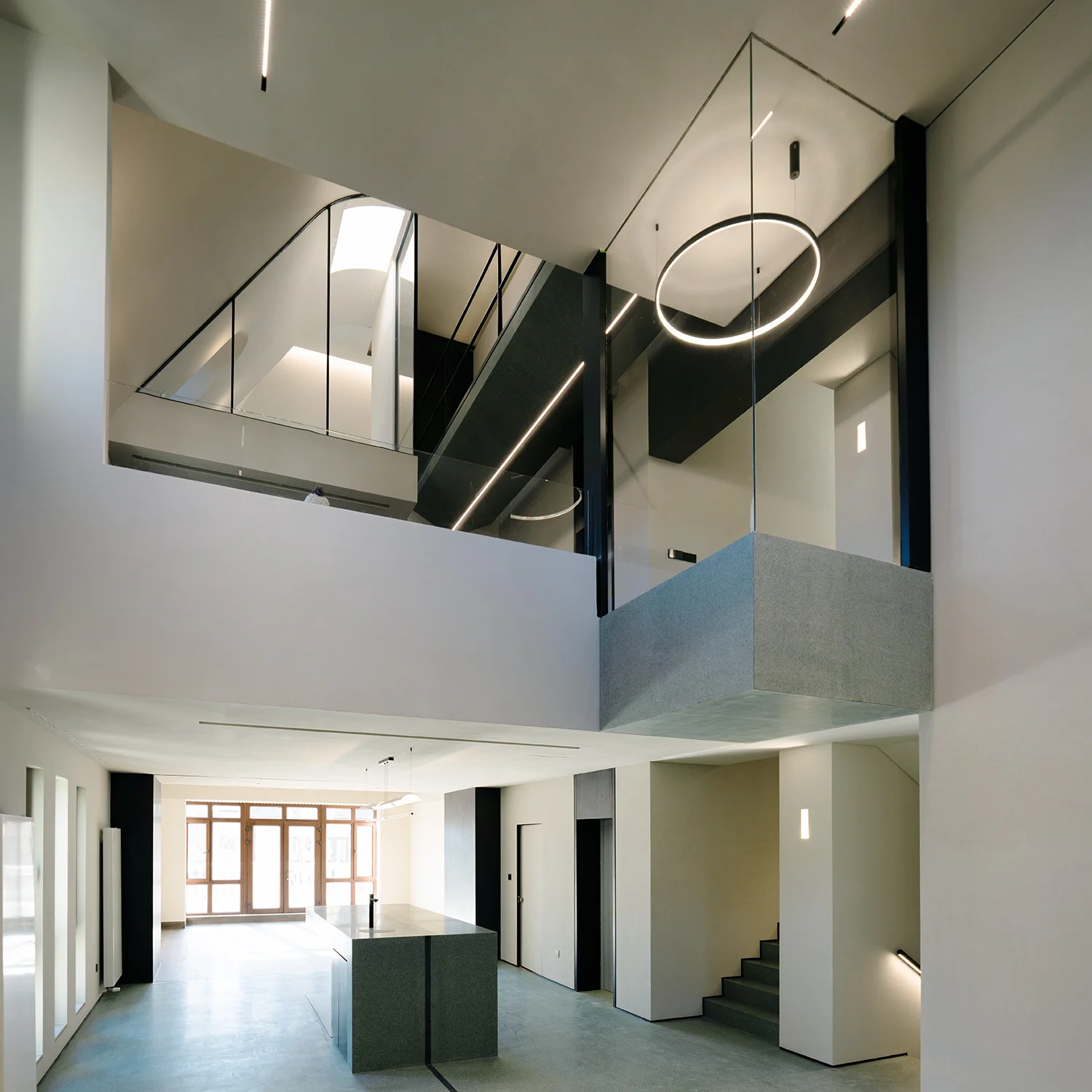

The core of the design is the double-height indoor garden on second floor, adorned with greenery and sofas. Opening up the previously enclosed loft on the third floor, the garden allows natural light to diffuse into the surrounding areas.
Skylight on the roof brightens the garden, contributing to a comfortable atmosphere throughout the interior.
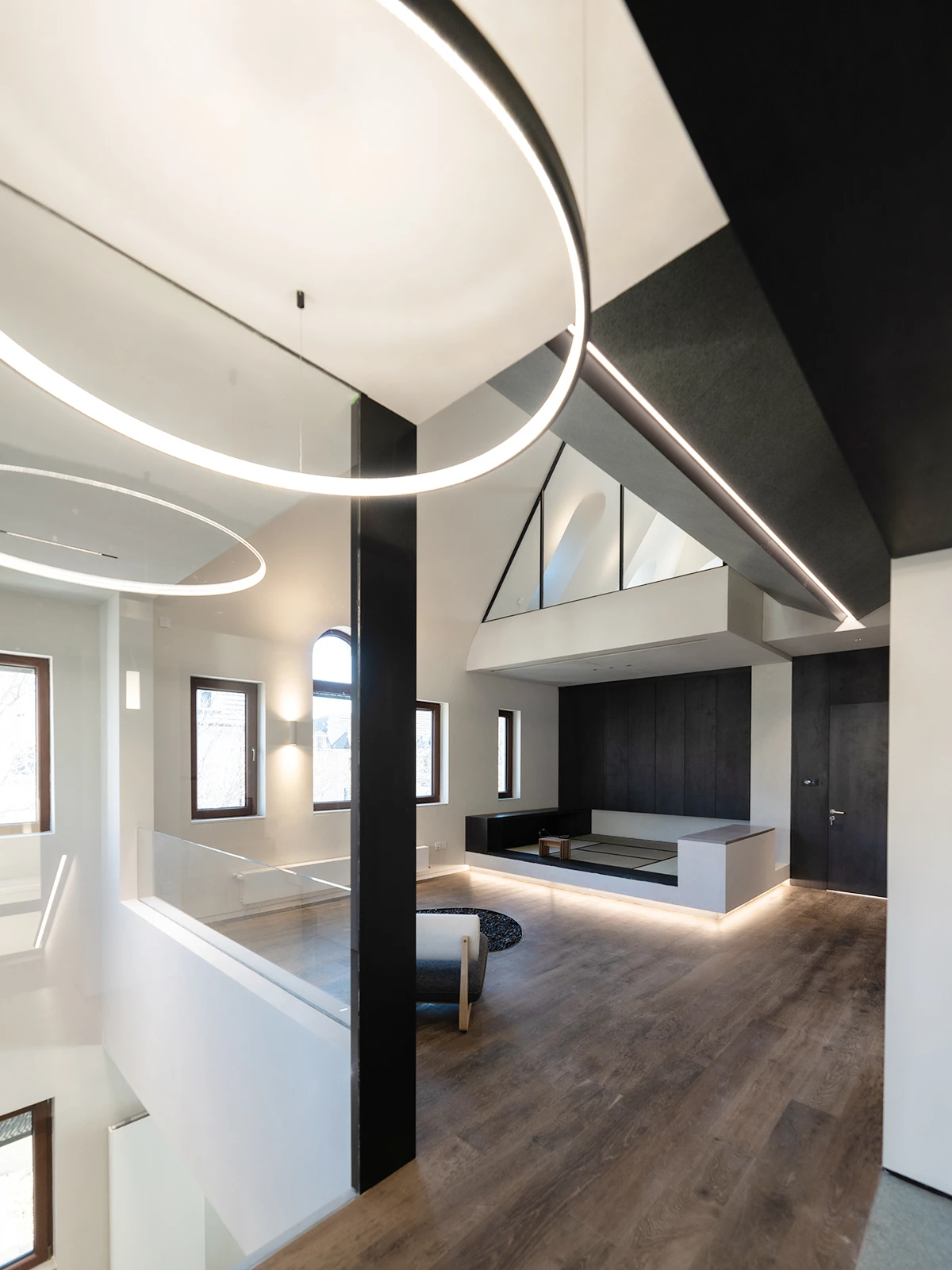
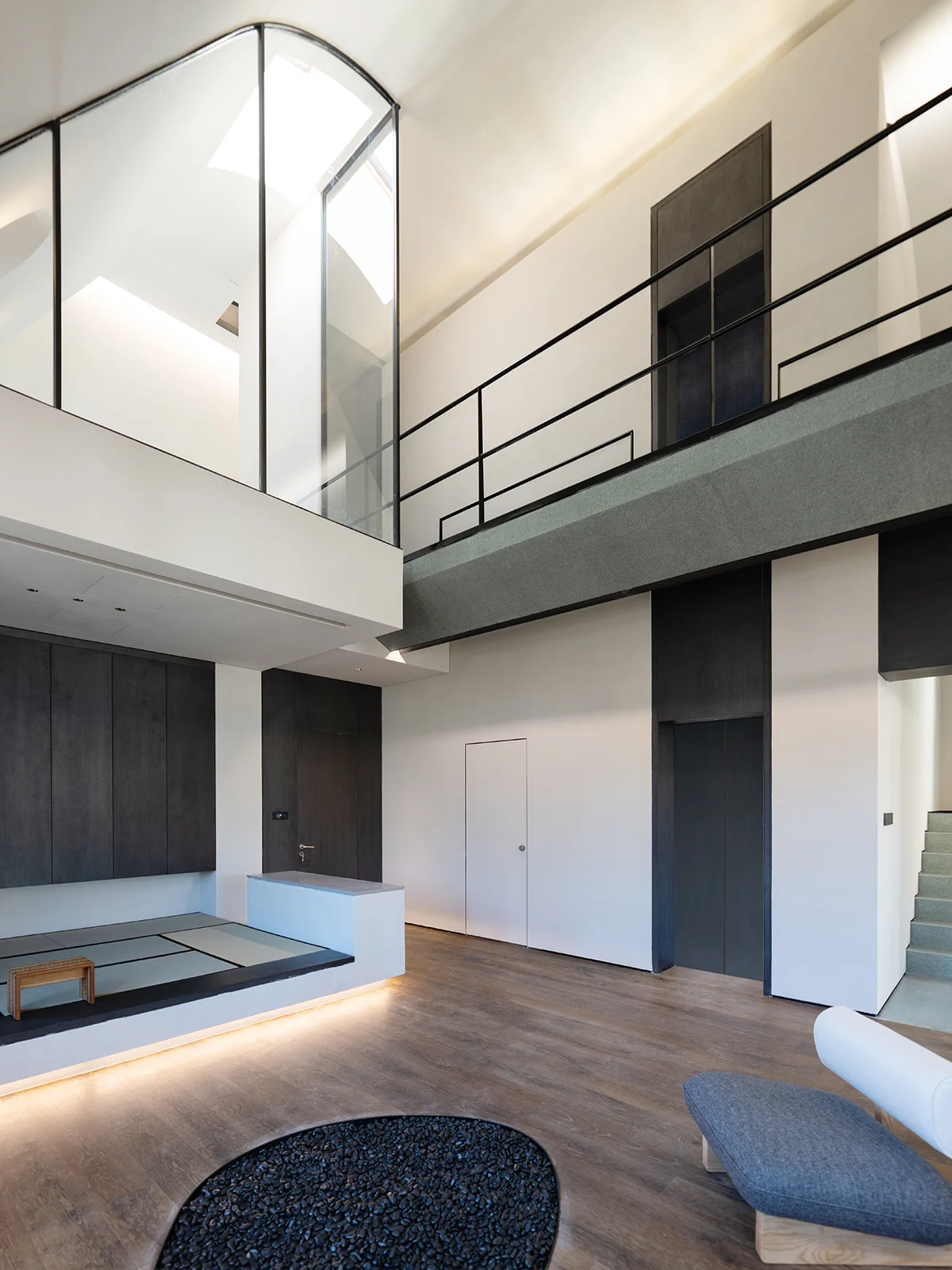


This garden, with its blossoming plants, serves as the spiritual nucleus of the home, connecting the various functional spaces on the first, second, and third floors both visually and acoustically. These spaces include the formal living room on the first floor, a traditional Japanese tea room on the second floor, and a suite and studio on the third floor.
The two spaces on the third-floor loft are located at both ends, linked together by a delicate connecting bridge spanning above the garden.
The attic suite is separated by full-height glass walls, utilizing the perception of architectural exterior walls to further emphasize the concept of the garden and tea room as outdoor spaces, with the garden, pavilion, and loft recreated indoor.
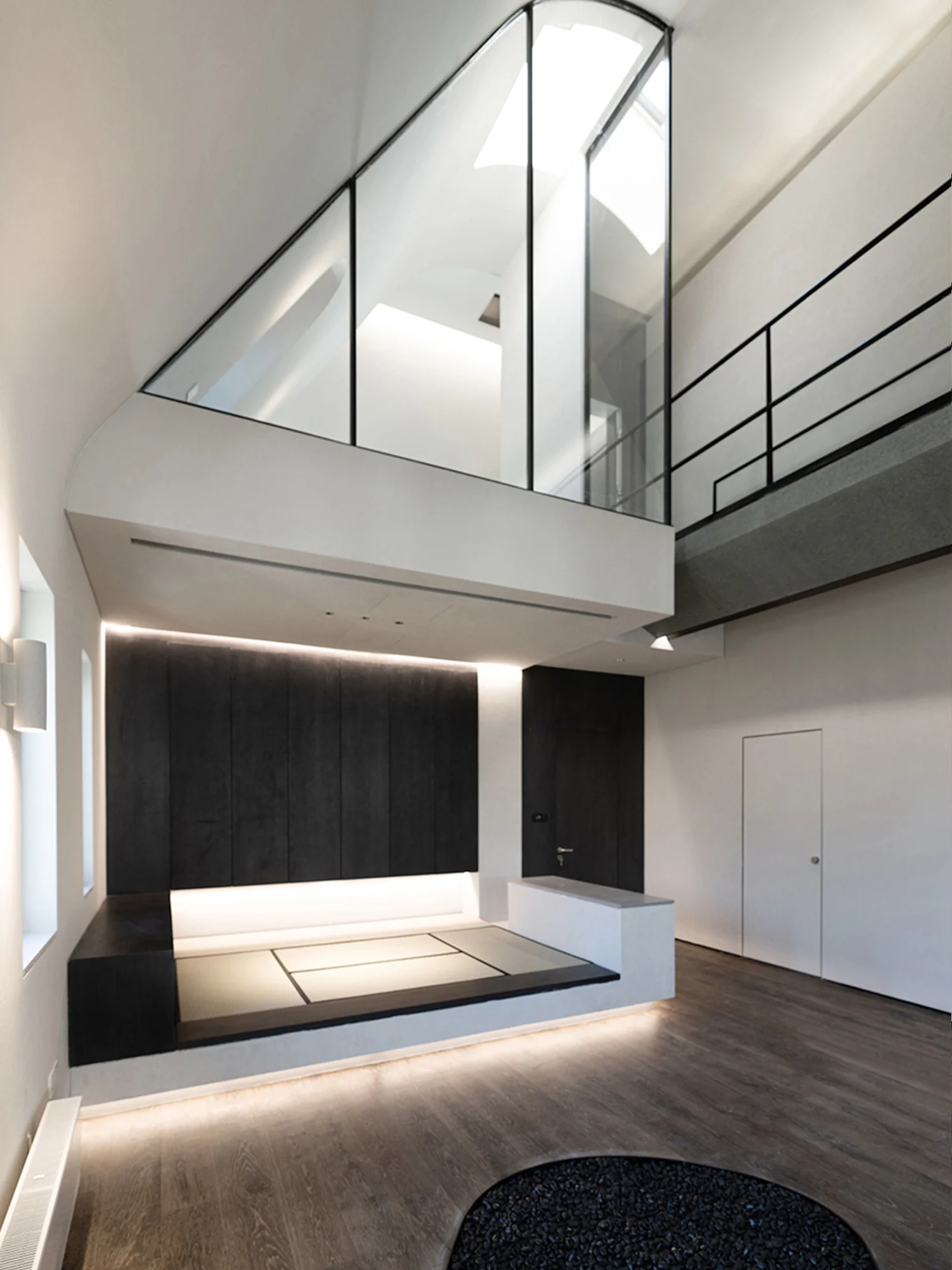
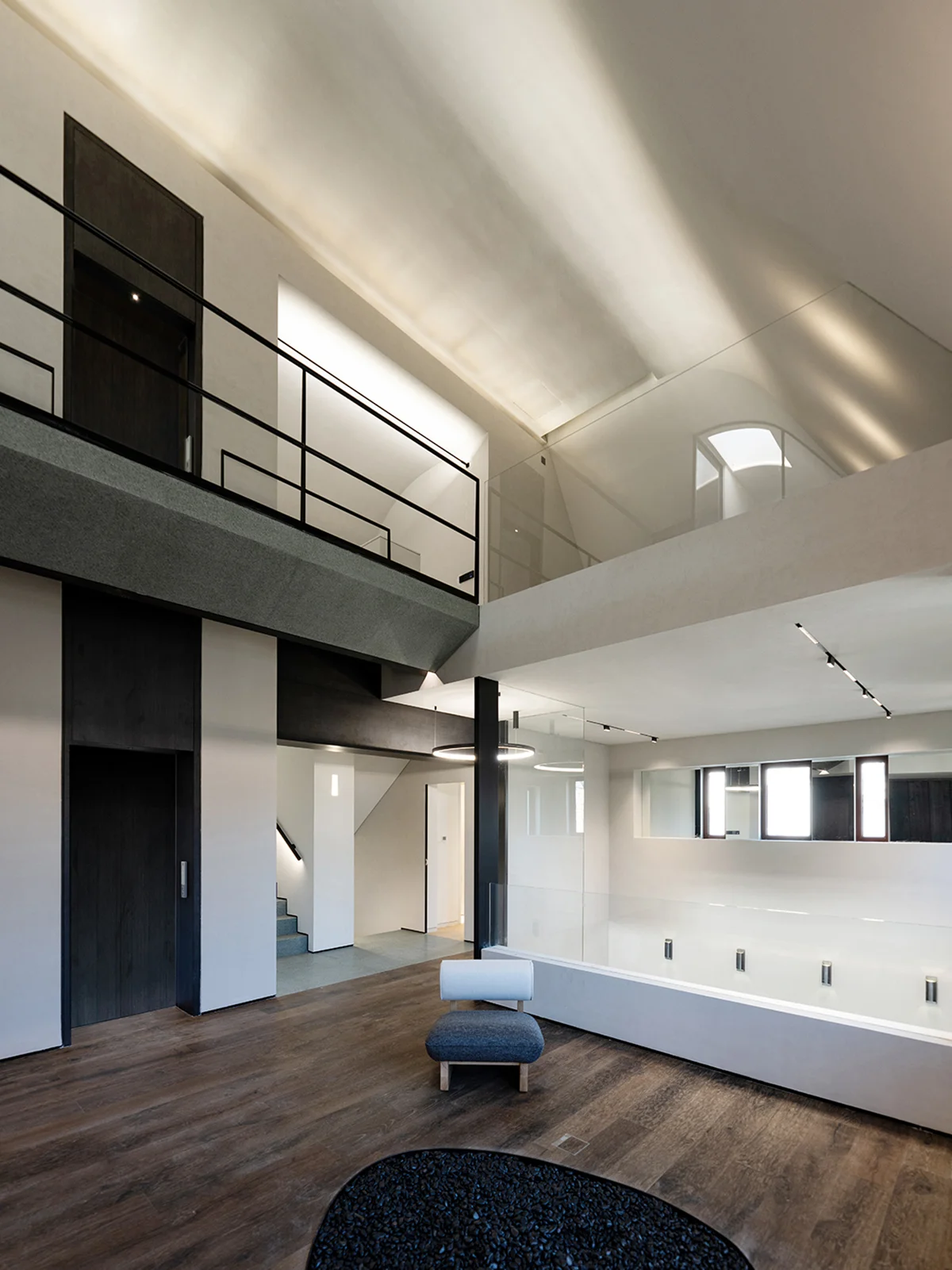
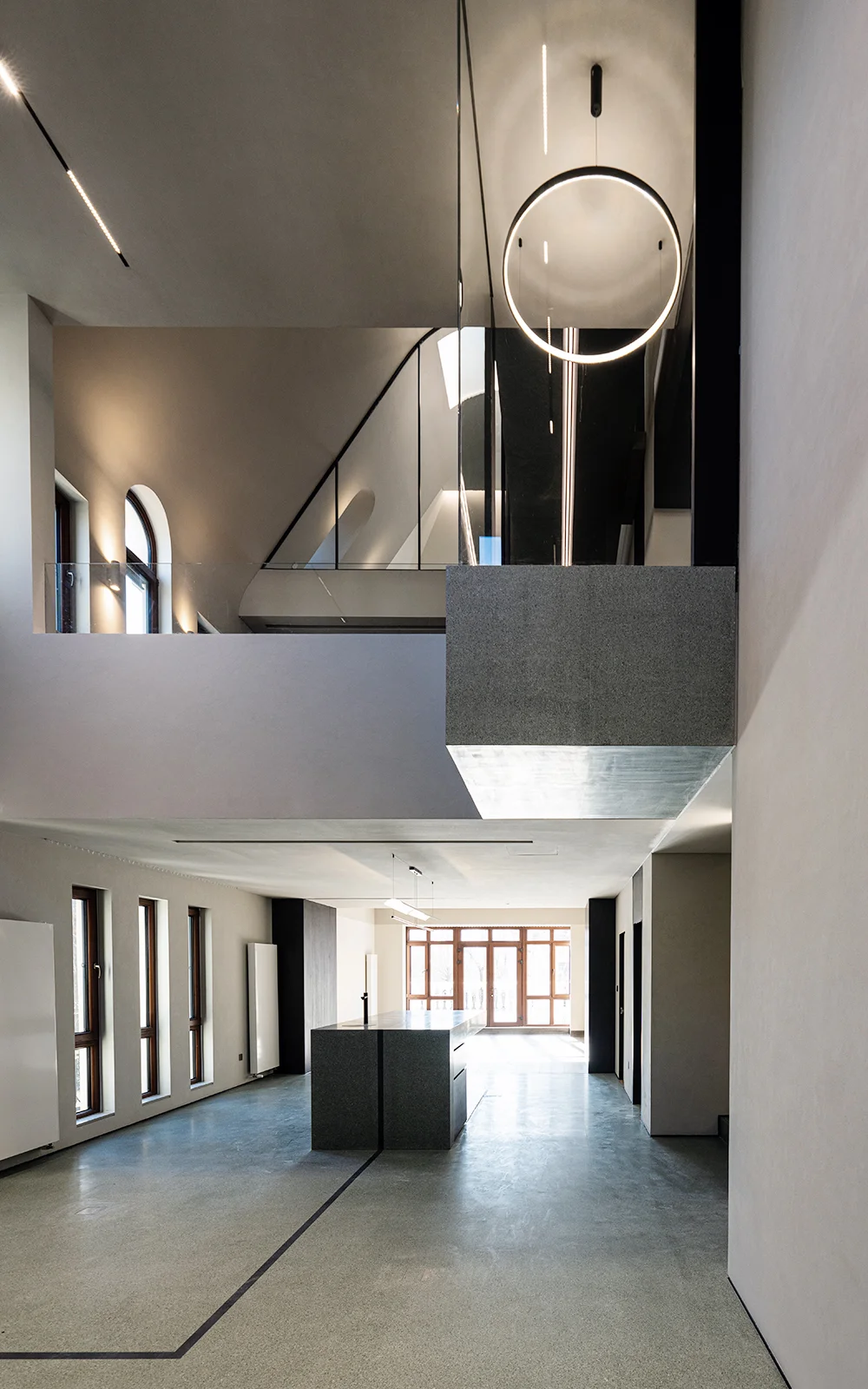
The attic suite, garden area, and living room form orderly tiered spaces, while the studio and tea room constitute another set of tiered spaces. The interplay of light, sightlines, and sound penetration creates a more open living environment.
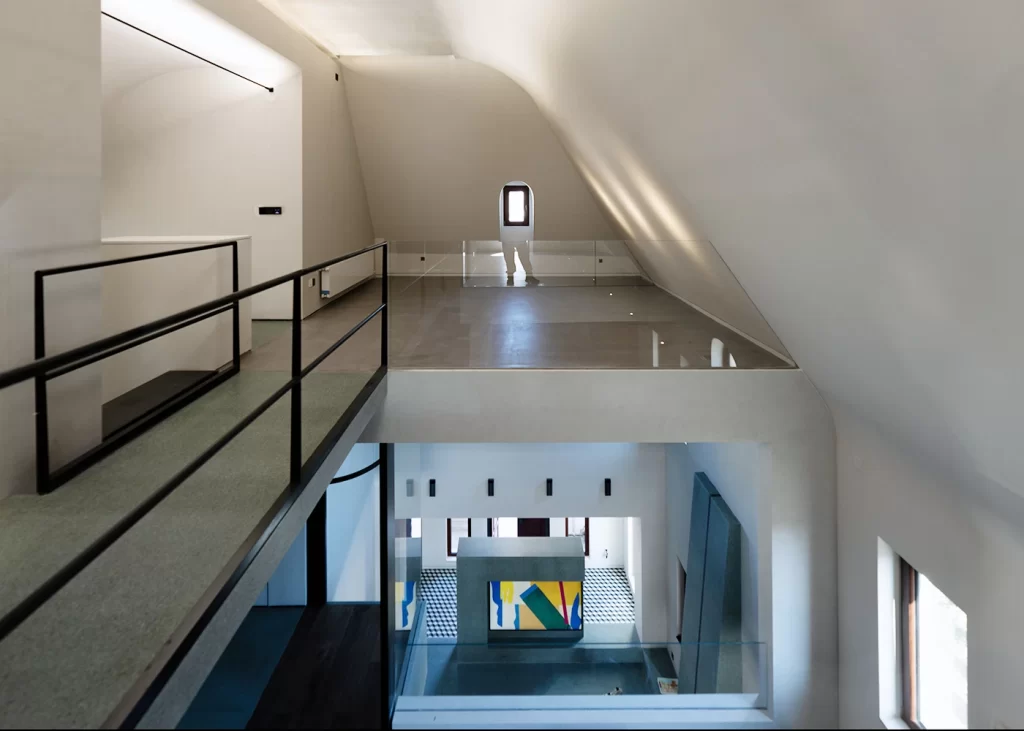
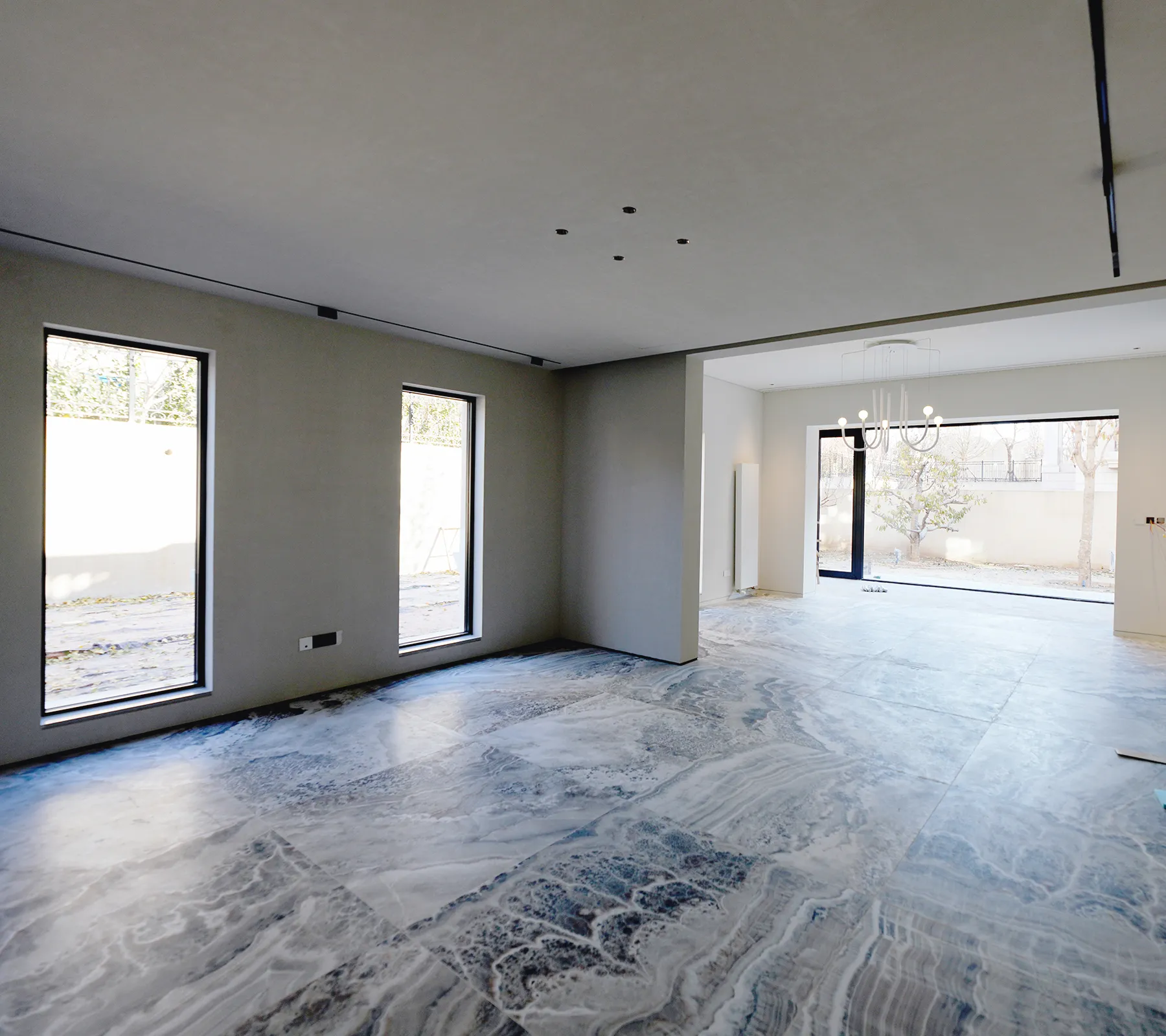
The lower level is connected to a sunken courtyard, serving as the primary living space with ample sunlight. We enclosed the external porch creating a small greenhouse space between the dining room and the garden using full-height glass cladding. Both the outdoor platform and the transitional space utilize outdoor stone paving, seamlessly extending the courtyard view into the dining area.
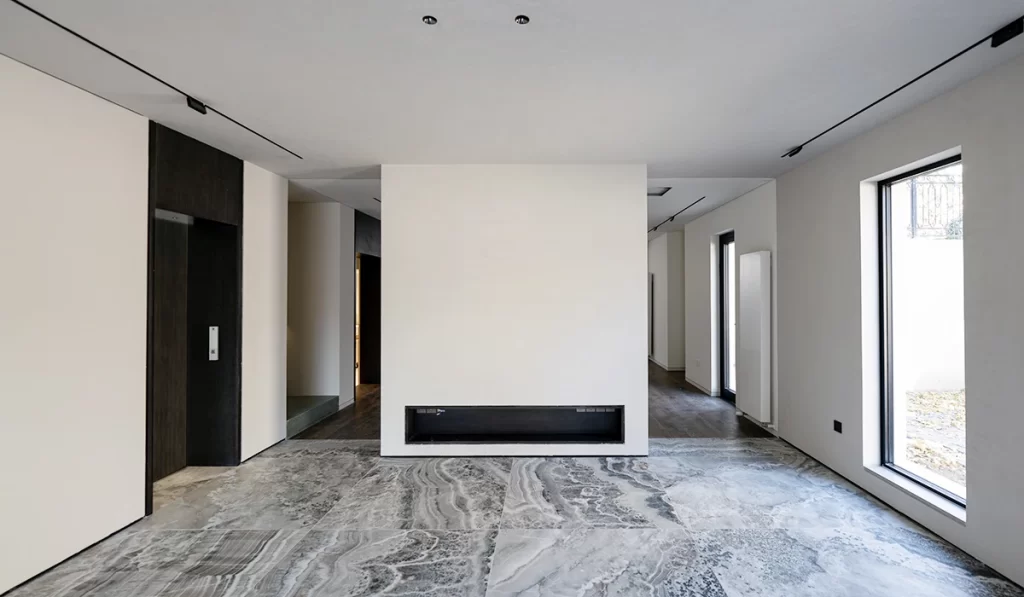
In the pursuit of architectural coherence and visual harmony, key architectural elements such as chimneys, connecting bridges, platforms, cantilevers, stairs, and floors are meticulously clad in deep green terrazzo.
This deliberate choice of material not only enhances the structural integrity of these features but also imbues them with a sense of robustness and permanence.
This consistent use of terrazzo throughout the house establishes a unifying visual thread, tying together disparate elements and spaces within the architectural composition.
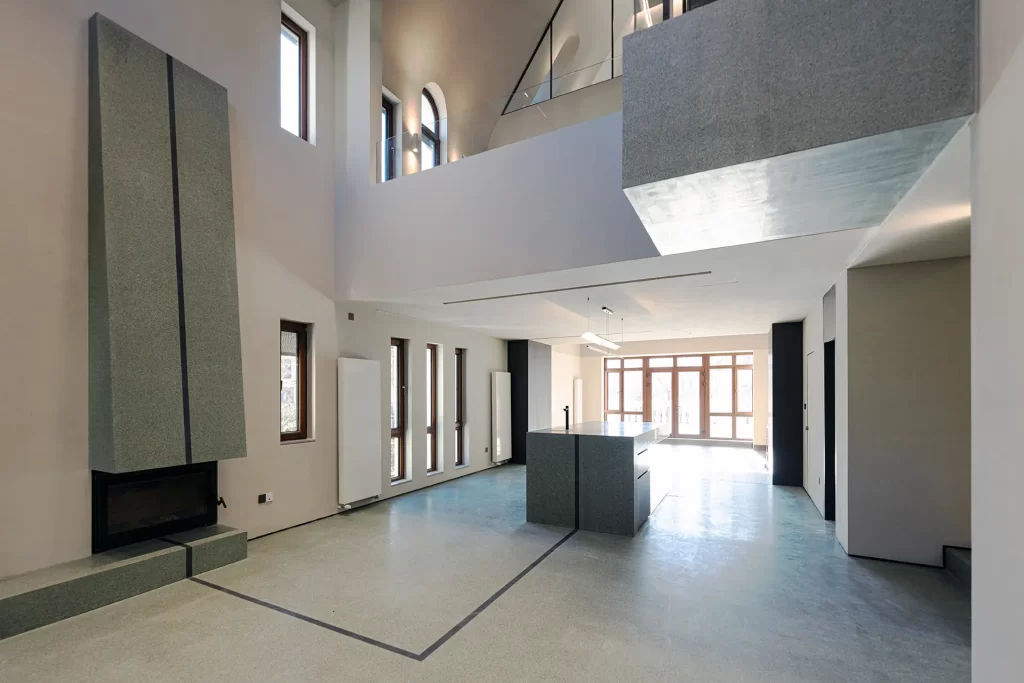
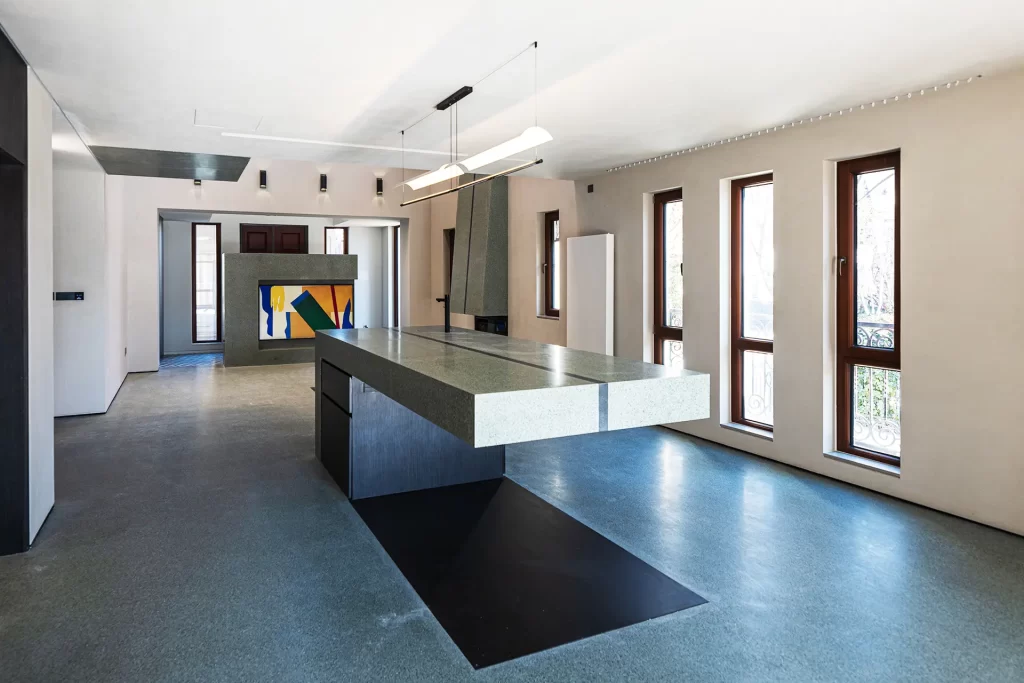
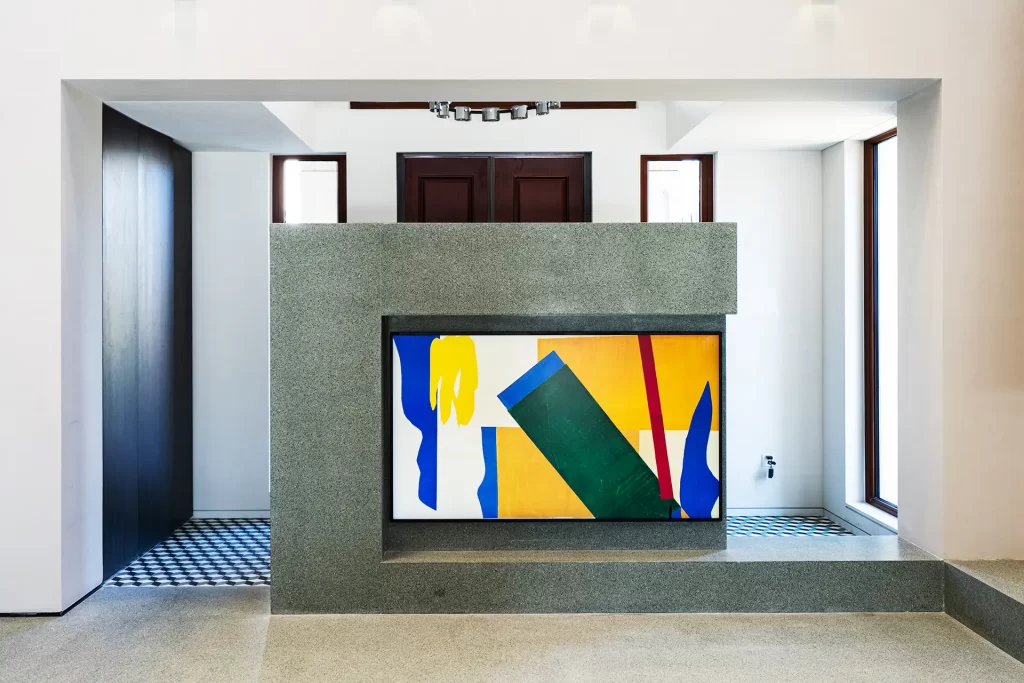
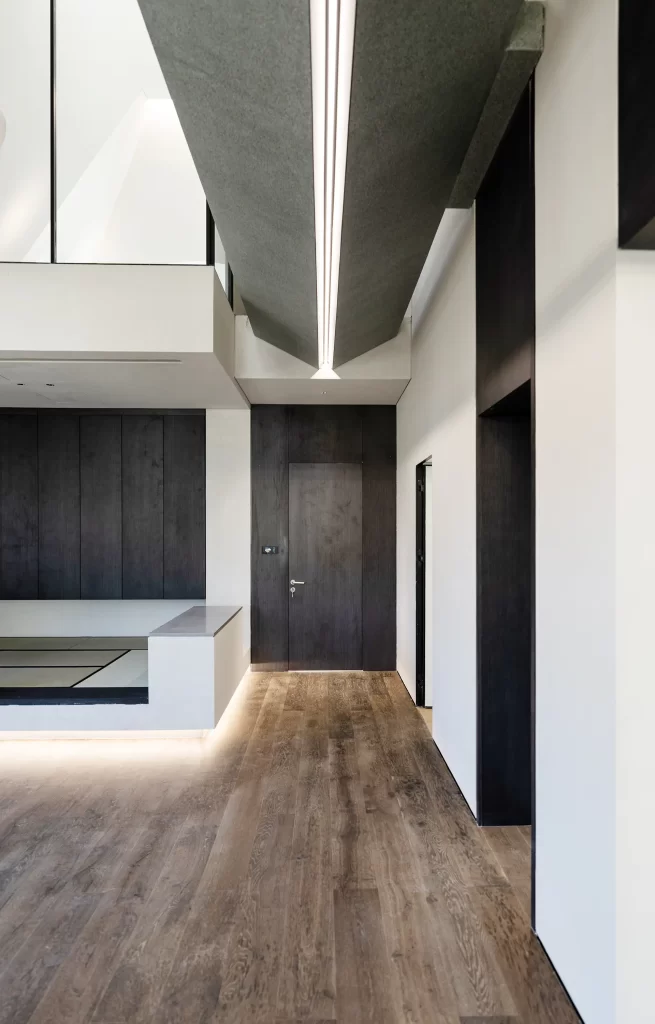
The restrained application of curved elements in architecture often relates to light organization. Level three curved ceilings reflect the light from concealed wall washer, providing gentle illumination for the entire third and second-floor garden spaces. The master bedroom’s partial ceiling, resembling a curtain, defines the area for the bed, with light gradually extending upward to illuminate the curtain.
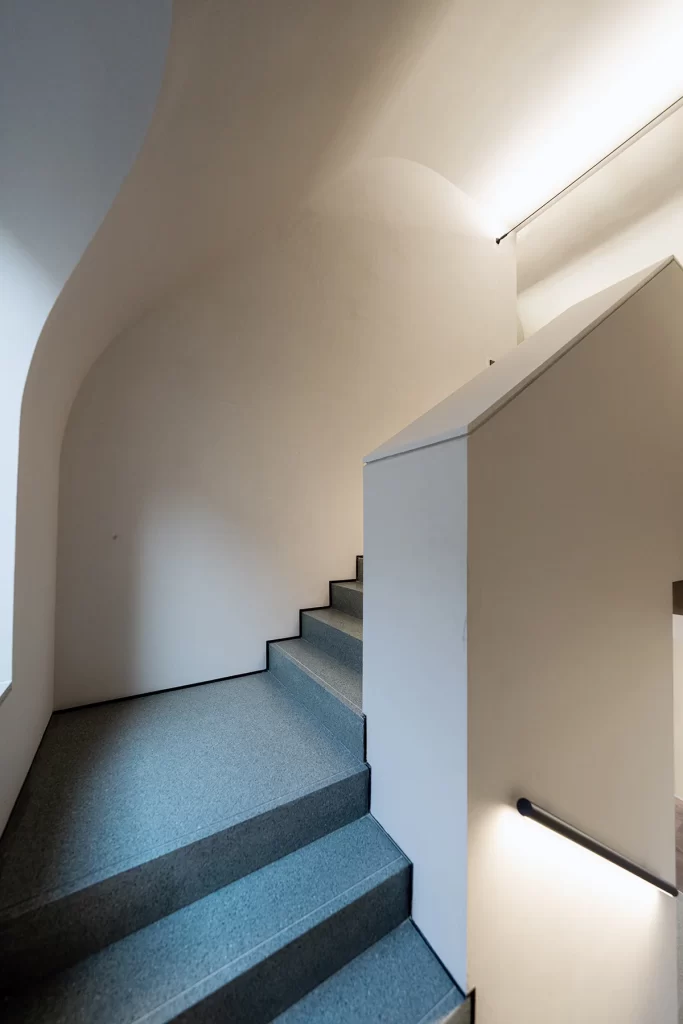
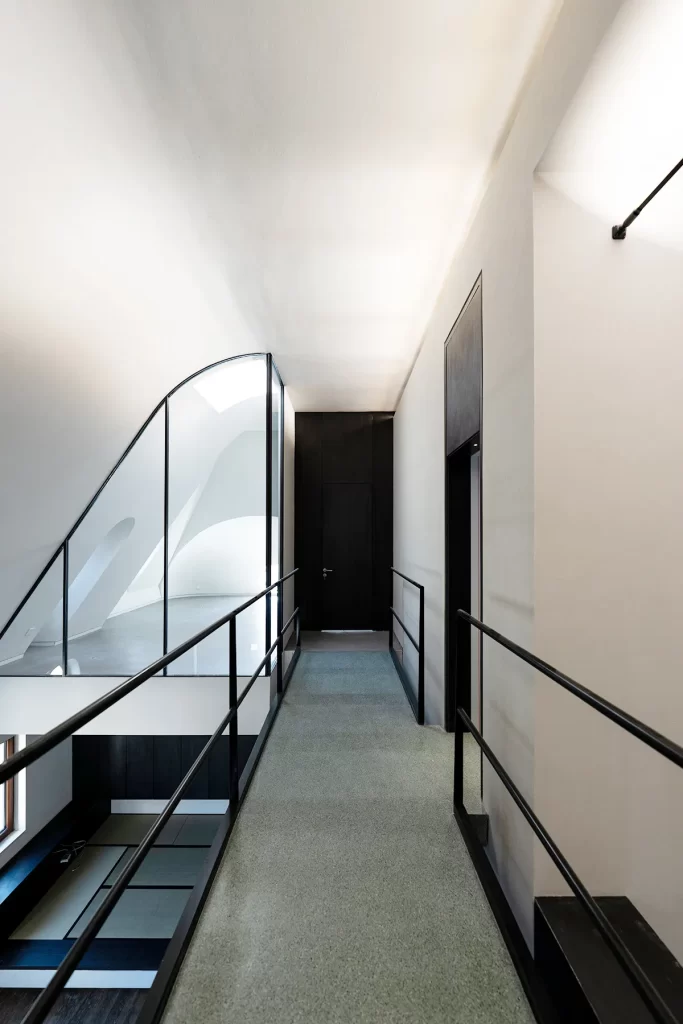
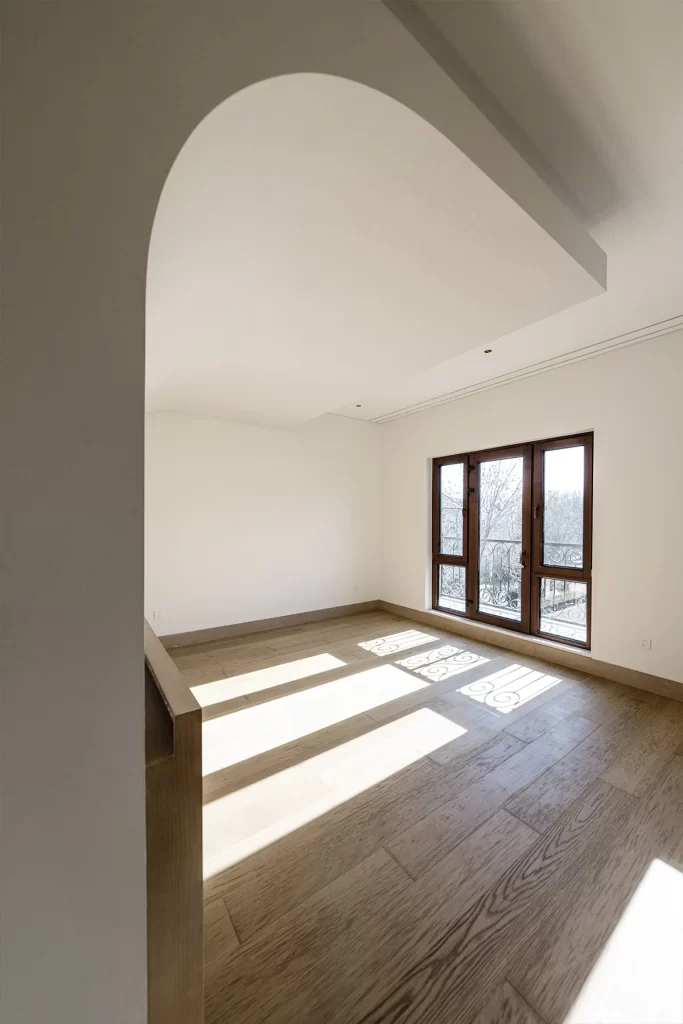
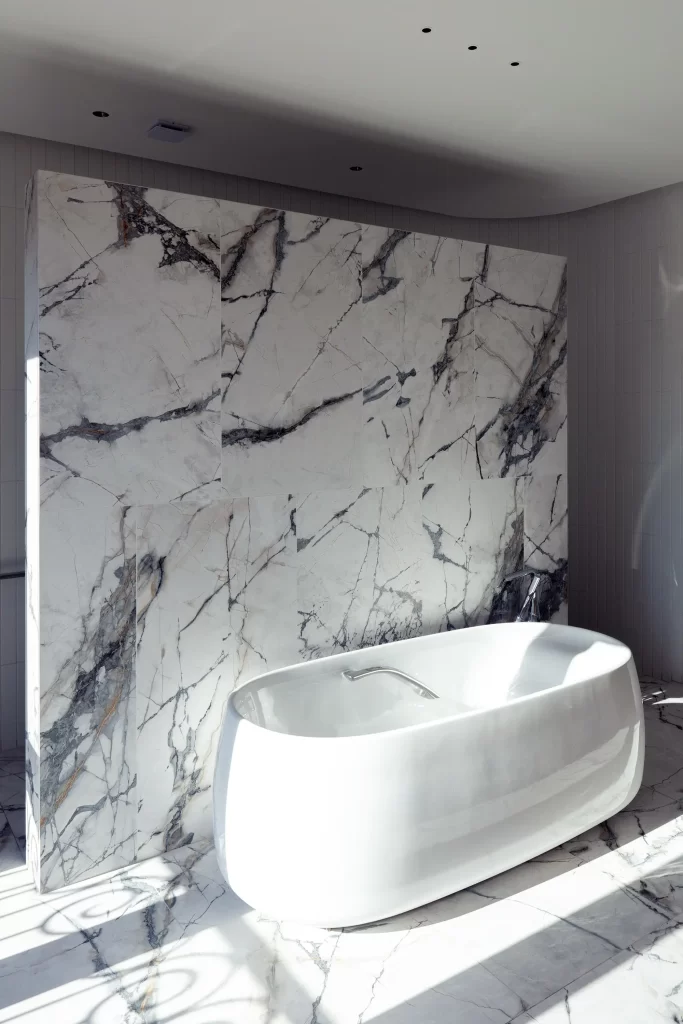
The curved design language is also reflected in light fixtures and bathrooms.
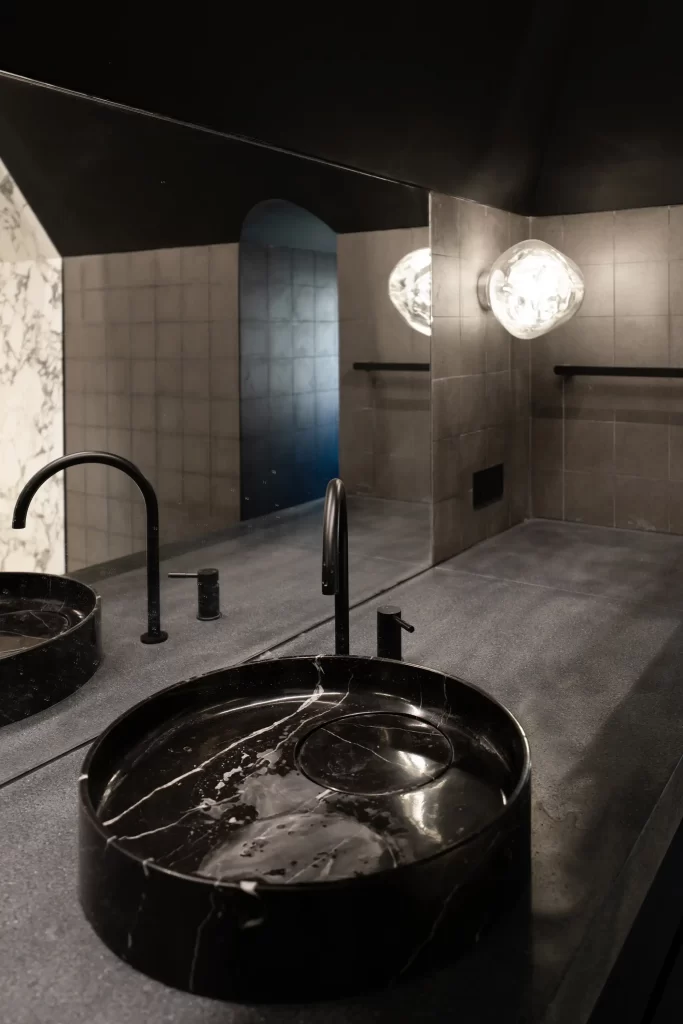
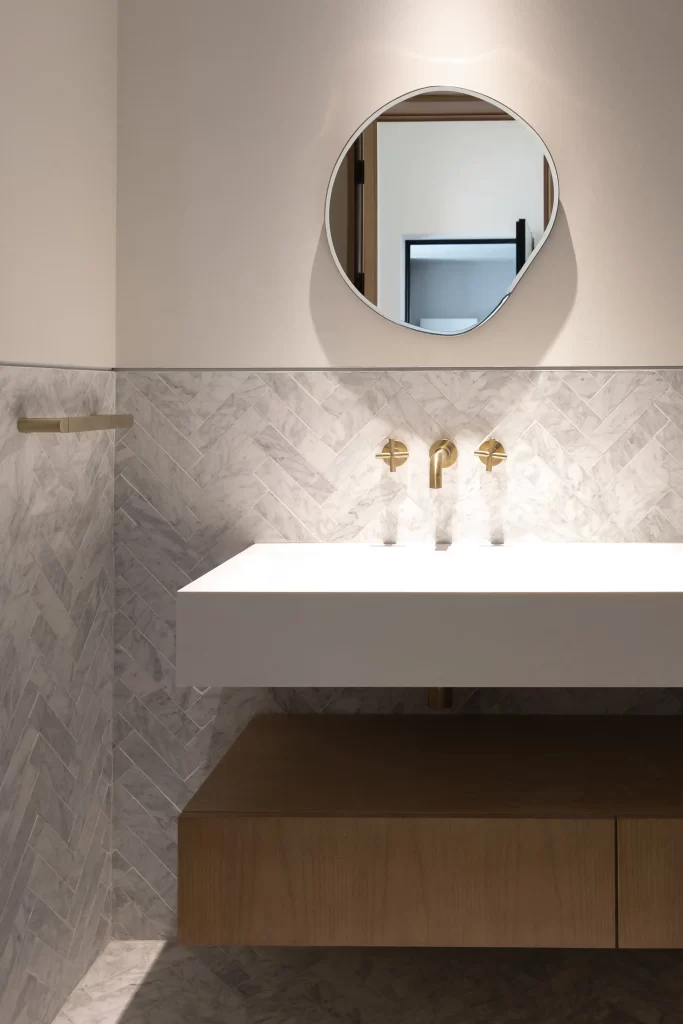
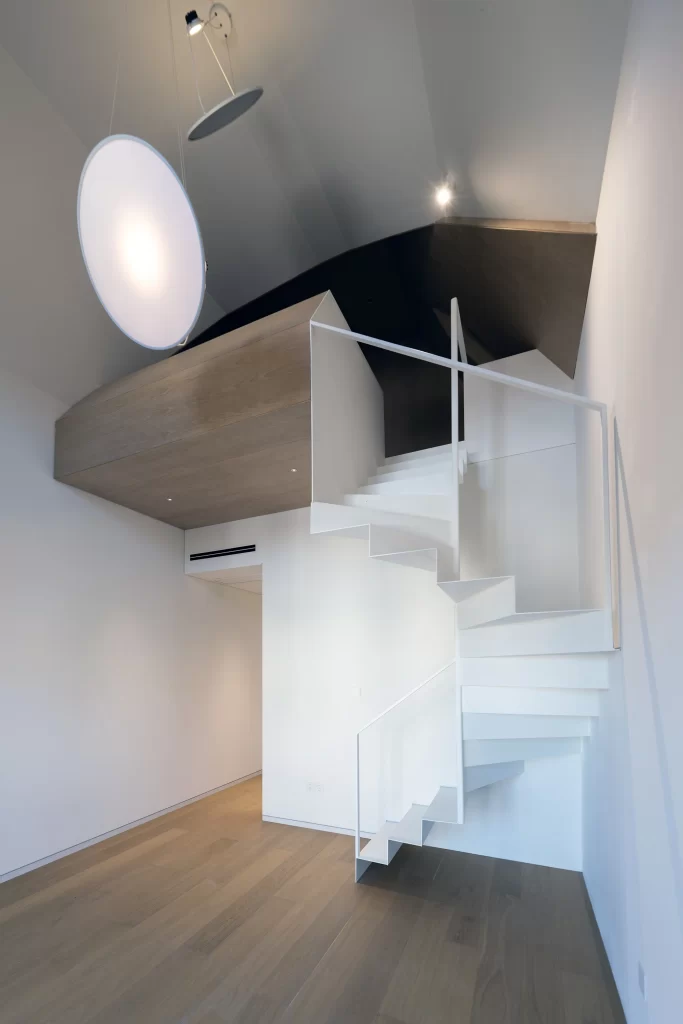
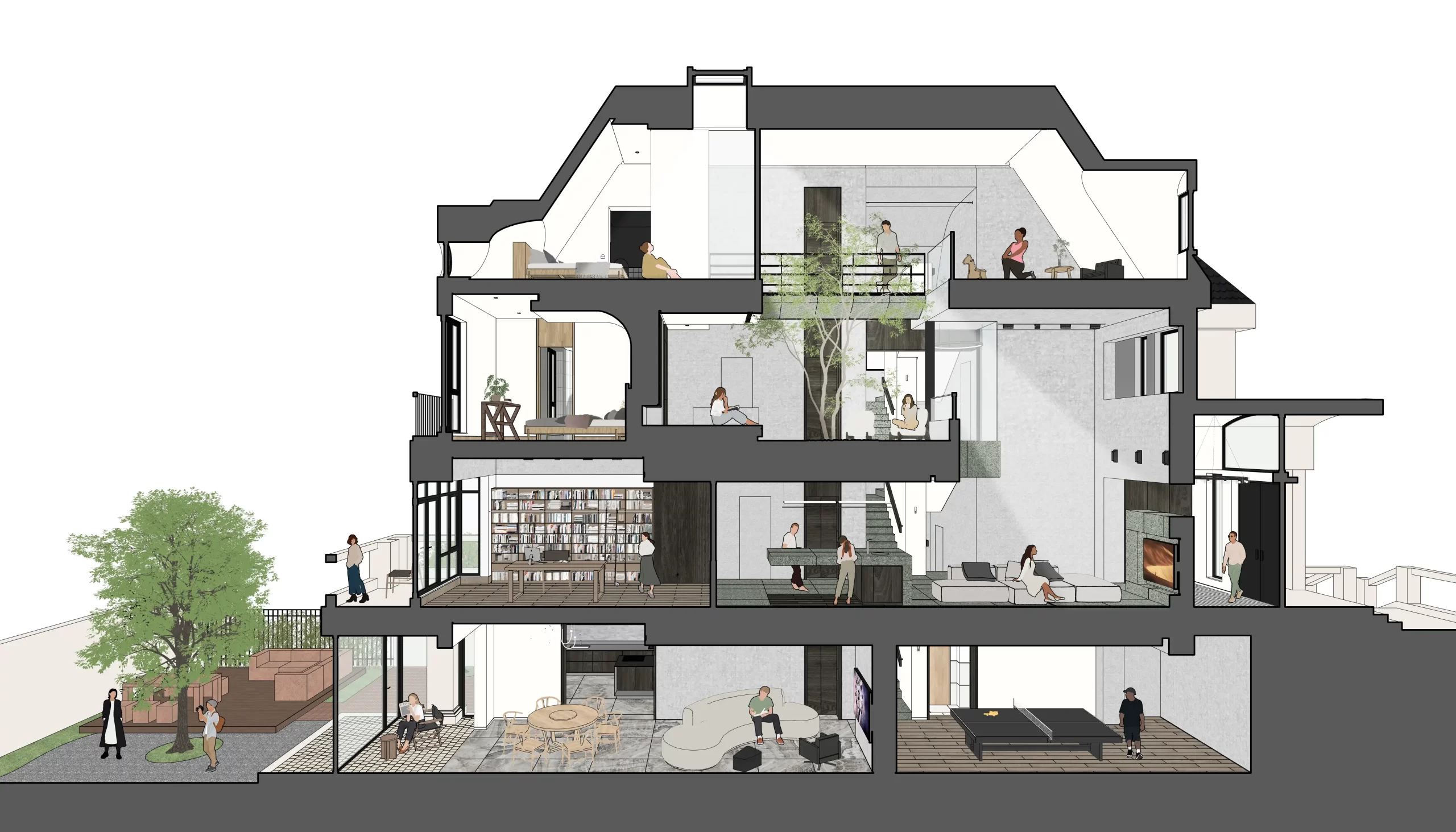
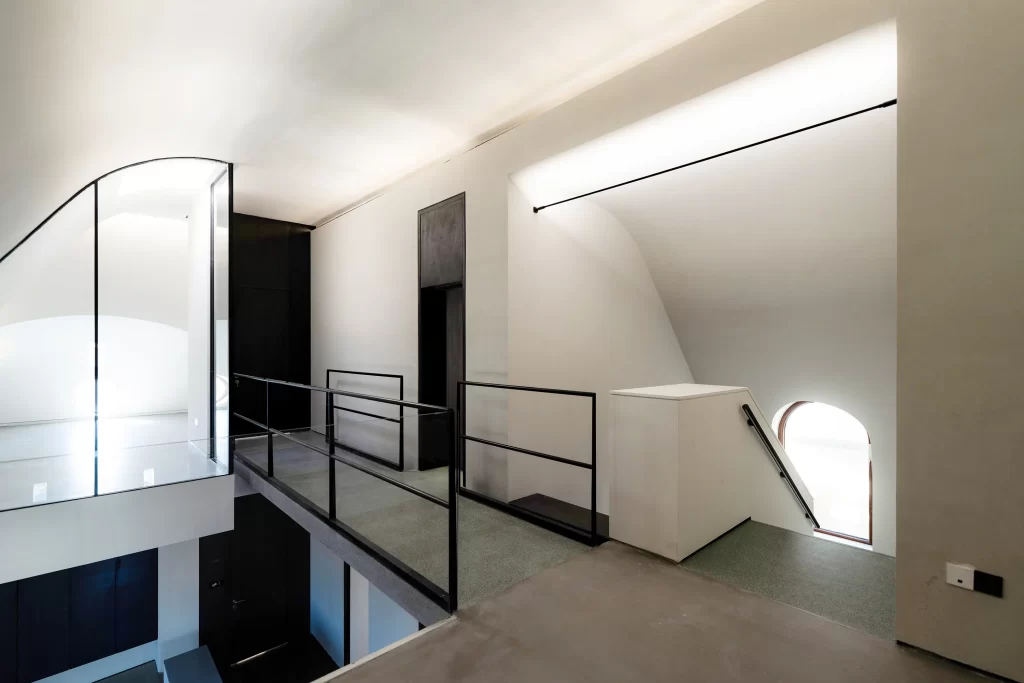
KD House
The KD House sits in a typical villa neighborhood in Beijing’s northern suburbs, in a prevailing French architectural style. Despite conforming to plot ratios and residential codes, it grapples with typical commercial residence hurdles: excessive depth and limited daylight due to min. building spacing regulations.
To tackle this, we divided the space into two zones. One benefits from ample daylight and houses frequently used areas like the study, dining room, and master bedroom. The other maximizes internal natural light, creating a pleasant atmosphere and blurring indoor-outdoor boundaries for enhanced family space usage.
Location | Beijing, China
Programme | Private Residence
Client | Confidential
Work Scope | Interior Design: Concept, SD, DD, CD, CA
Current Status | Substantial Completion
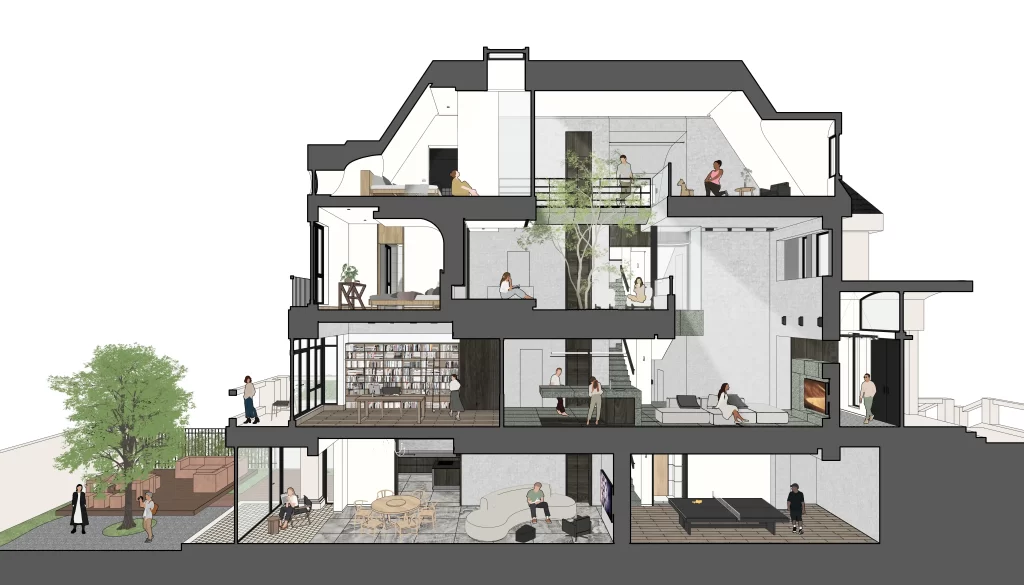

The core of the design is the double-height indoor garden on second floor, adorned with greenery and sofas. Opening up the previously enclosed loft on the third floor, the garden allows natural light to diffuse into the surrounding areas.
Skylight on the roof brightens the garden, contributing to a comfortable atmosphere throughout the interior.
This garden serves as the spiritual nucleus of the home, connecting the various functional spaces on the first, second, and third floors both visually and acoustically. These spaces include the formal living room on the first floor, a traditional Japanese tea room on the second floor, and a suite and studio on the third floor.
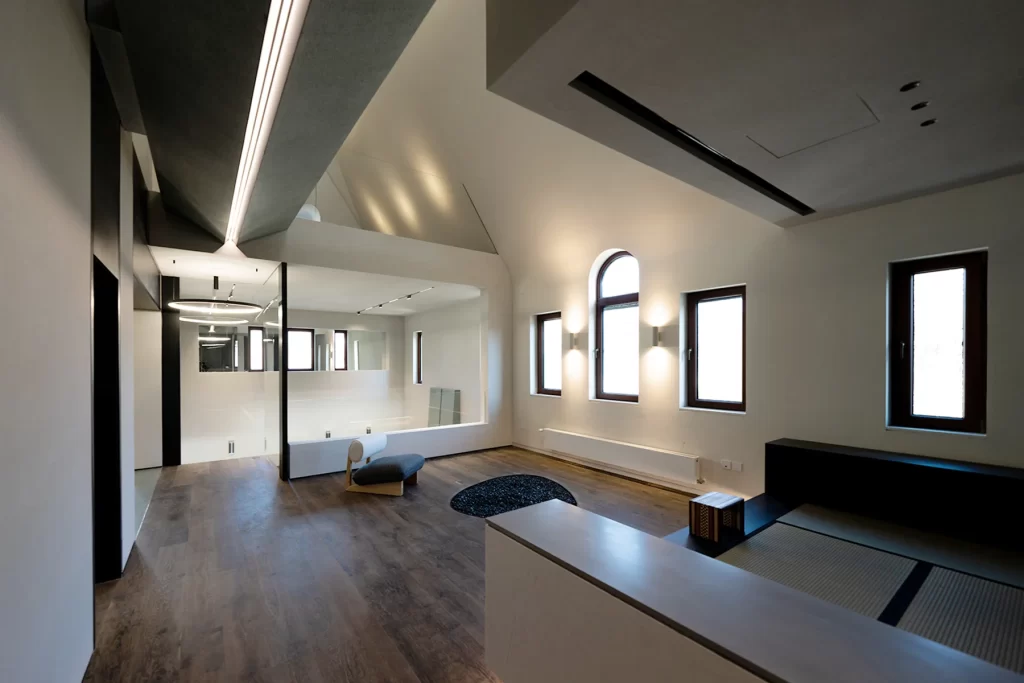
The two spaces on the third-floor loft are located at both ends, linked together by a delicate connecting bridge spanning above the garden. Full-height glass cladding separates the attic suites, utilizing the perception of architectural exterior walls to further emphasize the concept of the garden and tea room as outdoor spaces, with the garden, pavilion, and loft recreated indoor.
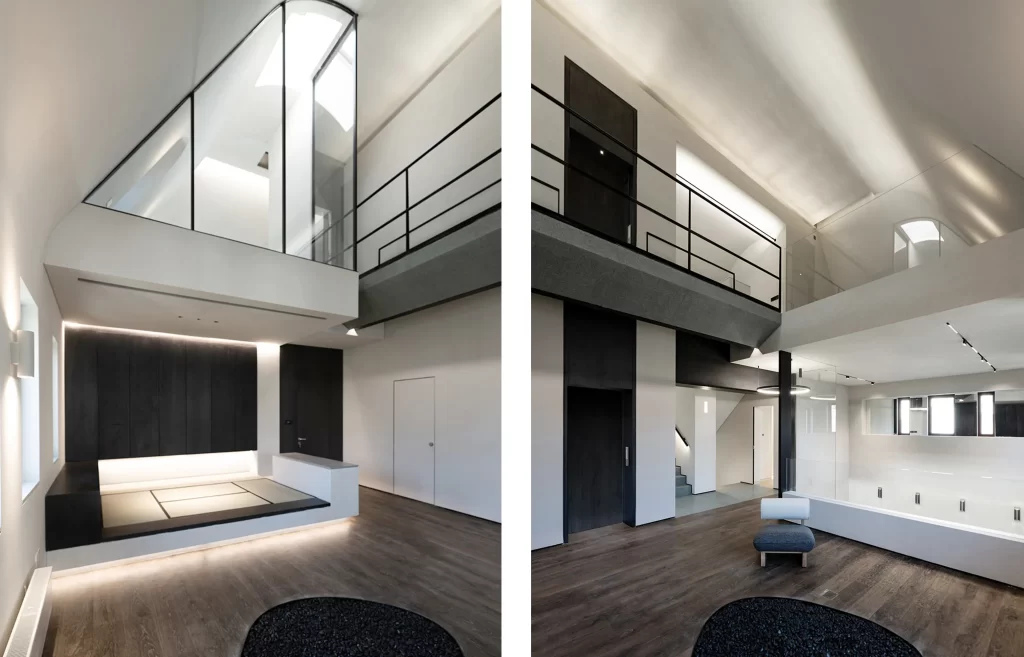
The living room, garden, and attic suite cascade in tiers, complemented by the studio and tea room. This tiered arrangement enhances openness through skillful manipulation of light, sightlines, and sound.

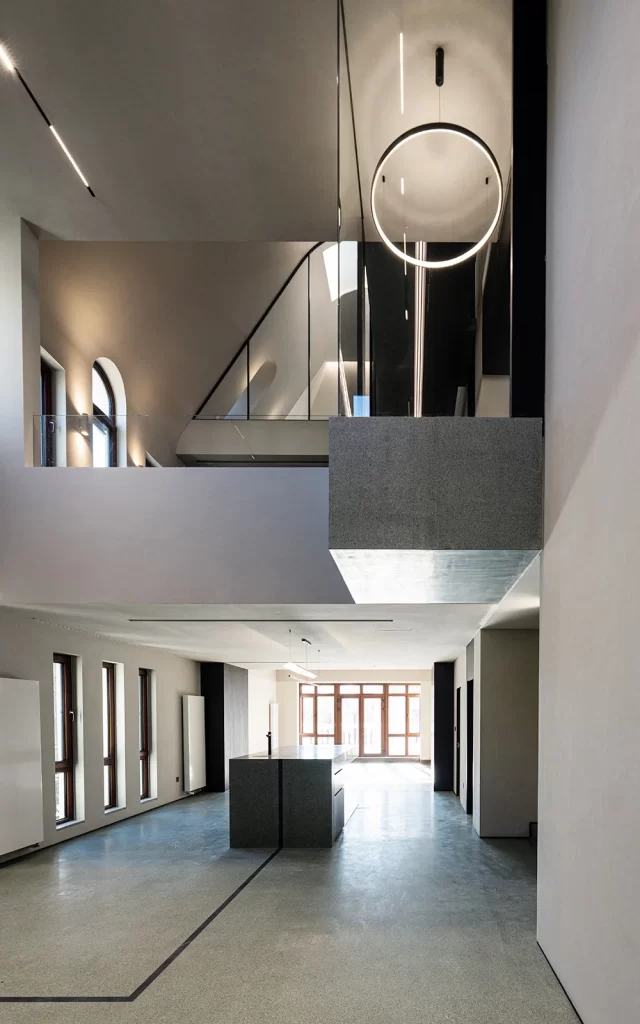
To achieve architectural cohesion, essential elements like chimneys, bridges, cantilevers, and floors are carefully enveloped in deep green terrazzo. This choice not only bolsters their strength but also instills a lasting quality. Its consistent application throughout the house creates visual unity, seamlessly integrating various elements and spaces.
Deep green terrazzo is used to visual unify different elements within the architectural composition.
The lower level is connected to a sunken courtyard, serving as the primary living space with ample sunlight. We enclosed the external porch creating a small greenhouse space between the dining room and the garden using full-height glass cladding. Both the outdoor platform and the transitional space utilize outdoor stone paving, seamlessly extending the courtyard view into the dining area.
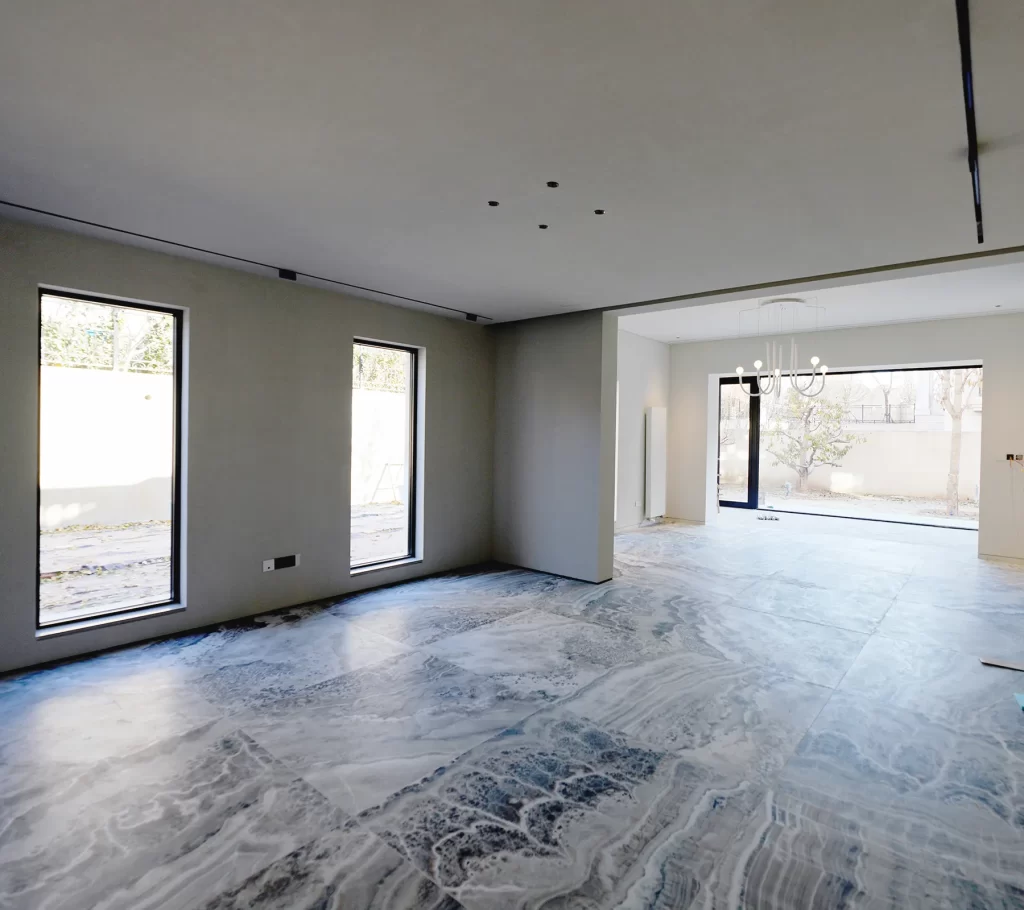
The restrained application of curved elements in architecture often relates to light organization. Level three curved ceilings reflect the light from concealed wall washer, providing gentle illumination for the entire third and second-floor garden spaces. The master bedroom’s partial ceiling, resembling a curtain, defines the area for the bed, with light gradually extending upward to illuminate the curtain.
Curved elements are sparingly used to follow how light moves around the space.
The curved design language is also reflected in light fixtures and bathrooms.
We hope to draw inspiration from this project and seek to explore further possibilities in developing and leveraging underutilized urban spaces. With the advent of ever-evolving technological advancements, our objective is to effectively convert “negative assets” into valuable “positive assets” and repurpose “waste materials” into “valuable resources”. Ultimately, our aim is to approach urban renewal in a manner that prioritizes quality of life and sustainability.
